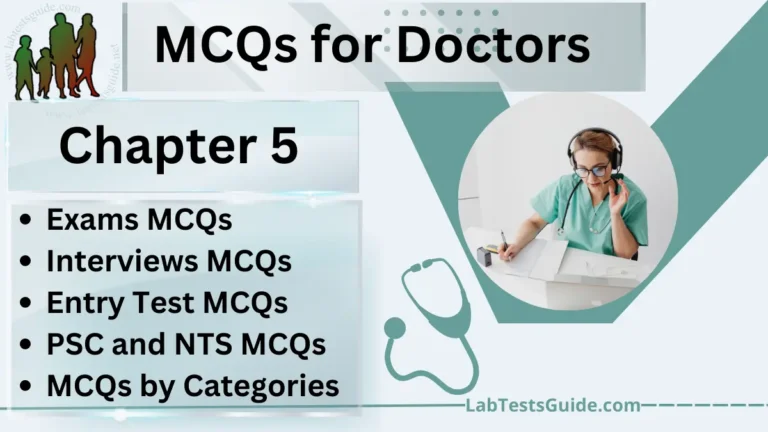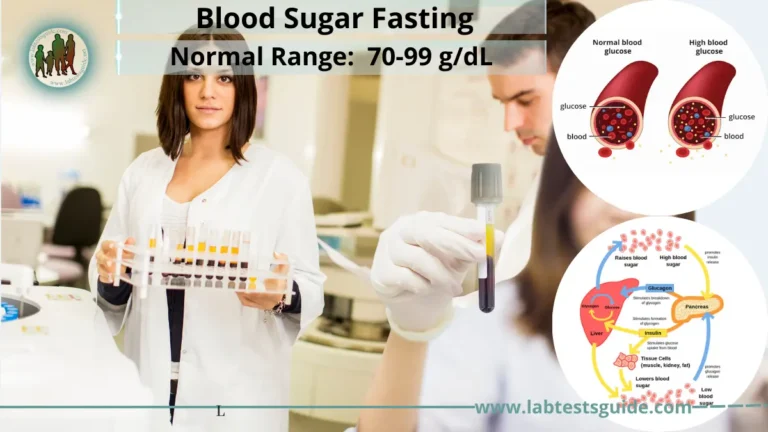5801 to 5850 MCQs for Lab Technician and Technologist Exam Preparation
5000 Plus MCQs for Lab Technician and Technologists are designed to test the knowledge and proficiency of laboratory professionals who work in the field of clinical laboratory science. These questions cover a wide range of topics related to laboratory science, including anatomy, physiology, microbiology, chemistry, and hematology.

If You like then share this to your friends and other social media.
If You have any question and suggestions then please Contact us Here
Questions 5801 to 5850
- Slow reacting Substance of Anaphylaxis is a mixture of
- Prostaglandins
- Prostacyclins
- Thromboxanes
- Leukotrienes ✔
- Dipalmitoyl lecithin acts as
- Platelet activating factor
- Second messenger for hormones
- Lung surfactant ✔
- Anti-ketogenic compound
- Reichert-Meissl number:
- 0.1 N KOH ✔
- 0.5 KOH
- 0.1 N NaOH
- 0.5 NaOH
- In glycerophospholipids, a polyunsaturated fatty acid is commonly attached to which of the following carbon atom of glycerol?
- Carbon 1
- Carbon 2 ✔
- Both (Carbon 1) and (Carbon 2)
- None of these
- Lysolecithin is formed from lecithin by removal of
- Fatty acid from position 1
- Fatty acid from position 2 ✔
- Phosphorylcholine
- Choline
- Sphingosine is synthesized from
- Palmitoyl CoA and Choline
- Palmitoyl CoA and ethanolamine
- Palmitoyl CoA and serine ✔
- Acetyl CoA and choline
- For synthesis of sphingosine, all the following coenzymes are required except
- Pyridoxal phosphate
- NADPH
- FAD
- NAD ✔
- Cerebrosides contain all the following except
- Galactose
- Sulphate ✔
- Sphingosine
- Fatty acid
- Niemann-Pick disease results from deficiency of
- Ceramidase
- Sphingomyelinase ✔
- Arylsulphatase A
- Hexosaminidase A
- Chylomicron remnants are catabolised in
- Intestine
- Adipose tissue
- Liver ✔
- Liver and intestine
- VLDL remnant may be converted into
- VLDL
- LDL ✔
- HDL
- Chylomicrons
- Receptors for chylomicron remnants are
- Apo A specific
- Apo B-48 specific
- Apo C specific
- Apo E specific ✔
- Nascent HDL of intestinal origin lacks
- Apo A
- Apo C
- Apo E
- Apo C and Apo E ✔
- HDL is synthesized in
- Adipose tissue
- Liver
- Intestine
- Liver and intestine ✔
- Nascent HDL of intestinal origin acquires Apo C and Apo E from
- Chylomicrons ✔
- VLDL
- LDL
- HDL of the hepatic origin
- Activated lecithin cholesterol acyl transferase is essential for the conversion of
- VLDL remnants into LDL
- Nascent HDL into HDL ✔
- HDL2 into HDL3
- HDL3 into HDL2
- Fatty liver may be caused by
- Deficiency of methionine
- Puromycin
- Chronic alcoholism
- All of these ✔
- Alcohol dehydrogenase converts ethanol into
- Acetyl CoA
- Acetaldehyde ✔
- Acetate
- CO2 and H2O
- Lipids are stored in the body mainly in the form of
- Phospholipids
- Glycolipids
- Triglycerides ✔
- Fatty acids
- Lipid stores are mainly present in
- Liver
- Brain
- Muscles
- Adipose tissue ✔
- Glycerol is converted into glycerol-3- phosphate by
- Thiokinase
- Triokinase
- Glycerol kinase ✔
- All of these
- In adipose tissue, glycerol-3-phosphate required for the synthesis of triglycerides comes mainly from
- Hydrolysis of pre-existing triglycerides
- Hydrolysis of phospholipids
- Dihydroxyacetone phosphate formed in glycolysis ✔
- Free glycerol
- Glycerol released from adipose tissue by hydrolysis of triglycerides is mainly
- Taken up by liver ✔
- Taken up by extrahepatic tissues
- Reutilised in adipose tissue
- Excreted from the body
- Free glycerol cannot be used for triglyceride synthesis in
- Liver
- Kidney
- Intestine
- Adipose tissue ✔
- Adipose tissue lacks
- Hormone-sensitive lipase
- Glycerol kinase ✔
- cAMP-dependent protein kinase
- Glycerol-3-phosphate dehydrogenase
- A digestive secretion that does not contain any digestive enzyme is
- Saliva
- Gastric juice
- Pancreatic juice
- Bile ✔
- Saliva contains a lipase which acts on triglycerides having
- Short chain fatty acids ✔
- Medium chain fatty acids
- Long chain fatty acids
- All of these
- Salivary lipase hydrolyses the ester bond at
- Position 1 of triglycerides ✔
- Position 2 of triglycerides
- Position 3 of triglycerides
- All of these
- Salivary lipase converts dietary triglycerides into
- Diglycerides and fatty acids ✔
- Monoglycerides and fatty acids
- Glycerol and fatty acids
- All of these
- Pancreatic lipase requires for its activity:
- Co-lipase
- Bile salts
- Phospholipids
- All of these✔
- Pancreatic lipase converts triacylglycerols into
- 2, 3-Diacylglycerol
- 1-Monoacylglycerol
- 2-Monoacylglycerol ✔
- 3-Monoacylglycero
- Oxidation of fatty acids occurs
- In the cytosol
- In the matrix of mitochondria ✔
- On inner mitochondrial membrane
- On the microsomes
- Activation of fatty acids requires all the following except
- ATP
- Coenzyme A
- Thiokinase
- Carnitine ✔
- Carnitine is required for the transport of
- Triglycerides out of liver
- Triglycerides into mitochondria
- Short chain fatty acids into mitochondria
- Long chain fatty acids into mitochondria ✔
- Carnitine acylcarnitine translocase is present
- In the inner mitochondrial membrane ✔
- In the mitochondrial matrix
- On the outer surface of inner mitochondrial membrane
- On the inner surface of inner mitochondrial membrane
- Net ATP generation on complete oxidation of stearic acid is
- 129
- 131
- 146 ✔
- 148
- Propionyl CoA formed oxidation of fatty acids having an odd number of carbon atoms is converted into
- Acetyl CoA
- Acetoacetyl CoA
- D-Methylmalonyl CoA ✔
- Butyryl CoA
- α-Oxidation of fatty acids occurs mainly in
- Liver
- Brain ✔
- Muscles
- Adipose tissue
- Refsum’s disease results from a defect in the following pathway except
- Alpha-oxidation of fatty acids
- Beta-oxidation of fatty acids✔
- Gamma-oxidation of fatty acids
- Omega-oxidation of fatty acids
- The end product of omega-oxidation of fatty acids having an even number of carbon atoms is
- Adipic acid
- Suberic acid
- Both (Adipic acid ) and (Suberic acid) ✔
- None of these
- Fat depots are located in
- Intermuscular connective tissue
- Mesentary
- Omentum
- All of these ✔
- Salivary lipase is secreted by
- Parotid glands
- Sub-maxillary glands
- Dorsal surface of tongue ✔
- None of these
- Co-lipase is a
- Bile salt
- Vitamin
- Protein ✔
- Phospholipid
- Plasma becomes milky
- Due to high level of HDL
- Due to high level of LDL
- During fasting
- After a meal ✔
- Mitochondrial membrane is permeable to
- Short chain fatty acids ✔
- Medium chain fatty acids
- Long chain fatty acids
- All of these
- During each cycle of β-oxidation
- One carbon atom is removed from the carboxyl end of the fatty acid
- One carbon atom is removed from the methyl end of the fatty acid
- Two carbon atoms are removed from the carboxyl end of the fatty acid ✔
- Two carbon atoms are removed from the methyl end of the fatty acid
- Net generation of energy on complete oxidation of palmitic acid is
- 106 ATP equivalents ✔
- 131 ATP equivalents
- 146 ATP equivalents
- 148 ATP equivalents
- Net generation of energy on complete oxidation of a 17-carbon fatty acid is
- Equal to the energy generation from a 16-carbon fatty acid
- Equal to the energy generation from an 18-carbon fatty acid
- Less than the energy generation from a 16-carbon fatty acid
- In between the energy generation from a 16-carbon fatty acid and an 18-carbon fatty acid✔
- Extramitochondrial synthesis of fatty acids occurs in
- Mammary glands
- Lungs
- Brain
- All of these ✔
- One functional sub-unit of multi-enzyme complex for de novo synthesis of fatty acids contains
- One —SH group
- Two —SH groups ✔
- Three —SH groups
- Four —SH groups
The questions are typically designed to assess the technical skills and knowledge required for the laboratory profession, including the ability to analyze laboratory test results, perform laboratory procedures, and maintain laboratory equipment.
To prepare for these MCQs, candidates should have a thorough understanding of the key concepts and principles of laboratory science. They should also be familiar with common laboratory equipment and procedures, as well as laboratory safety protocols.
Candidates may also benefit from studying specific laboratory science textbooks or taking online courses that cover the material tested in the MCQs. Additionally, practicing sample MCQs and reviewing the answers can help candidates identify areas where they may need to improve their knowledge or skills.
Overall, the MCQs for lab technologists are designed to be challenging and comprehensive, requiring candidates to demonstrate a high level of proficiency in the field of laboratory science.
Possible References Used




